




 | Developer's-Panther WebSphere |     |
This chapter describes the process for deploying Enterprise JavaBeans in WebSphere Application Server 3.5.

Installing Enterprise JavaBeans |  |
For the steps to create an application server and a container, refer to "Creating an Application Server."
 Enterprise Bean.
Enterprise Bean.
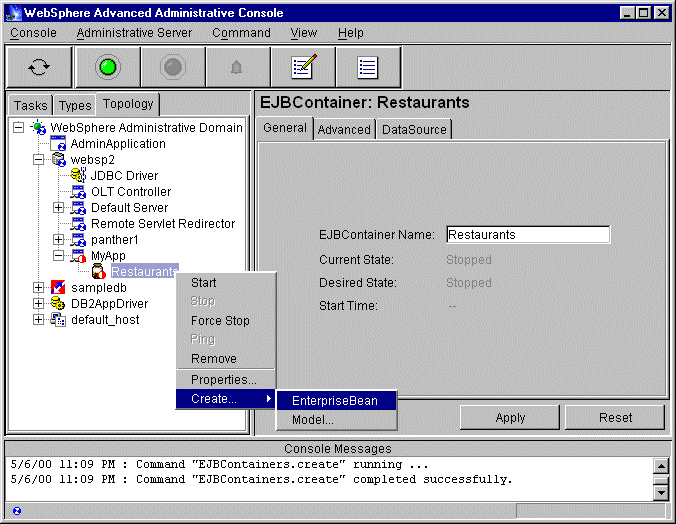
For local and native clients, the jar file is located in the directory specified in the Directory field of the EJB section of the Component Interface window.
For remote clients, the jar file is located where you ran the makeejb utility on the server's application library.
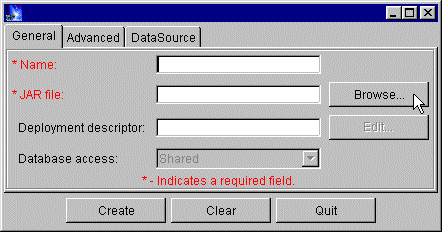
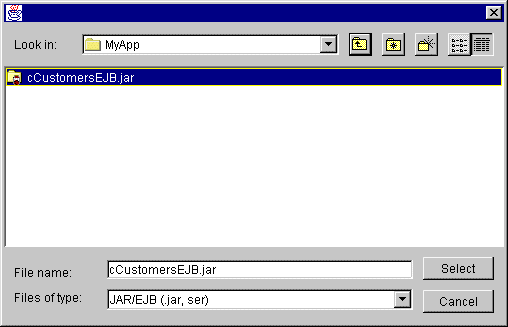

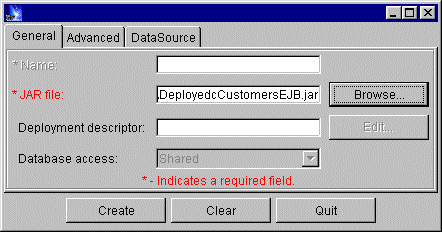

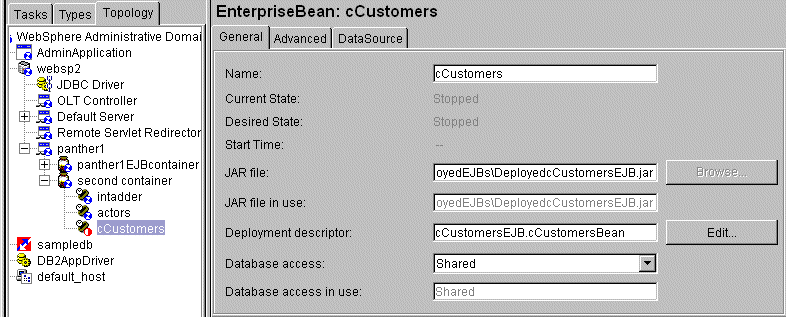
As part of its EJB generation, Panther creates a jar file containing the EJB's Java files, deployment descriptor, and environment settings needed by the bean.
When you deploy and install the EJB in WebSphere Administrative Console, it creates a jar file in its Deployed EJBs directory (typically $WAS_HOME/deployedEJBs). This changes the name of the jar file, prepending Deployed to the jar file name.



